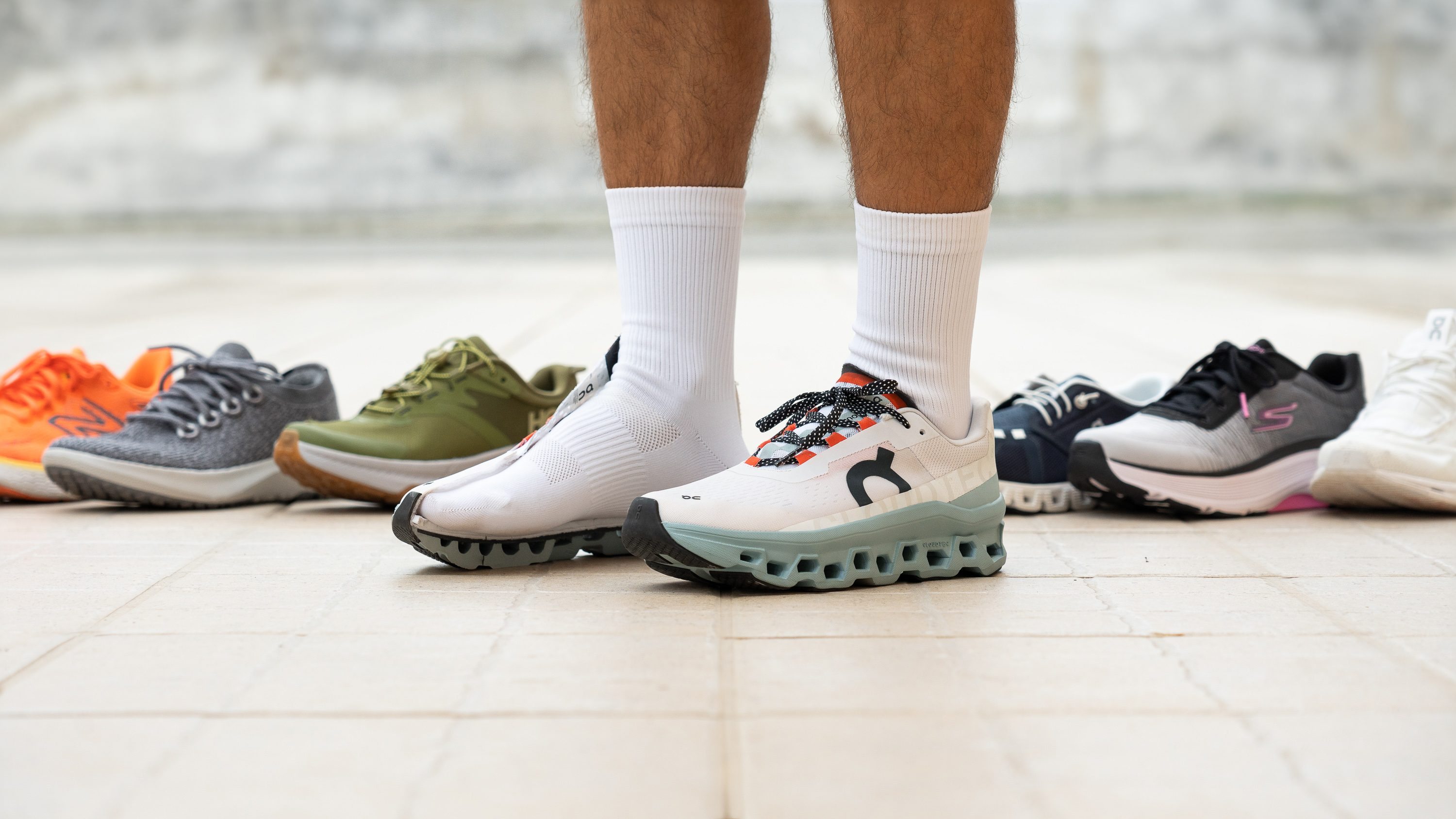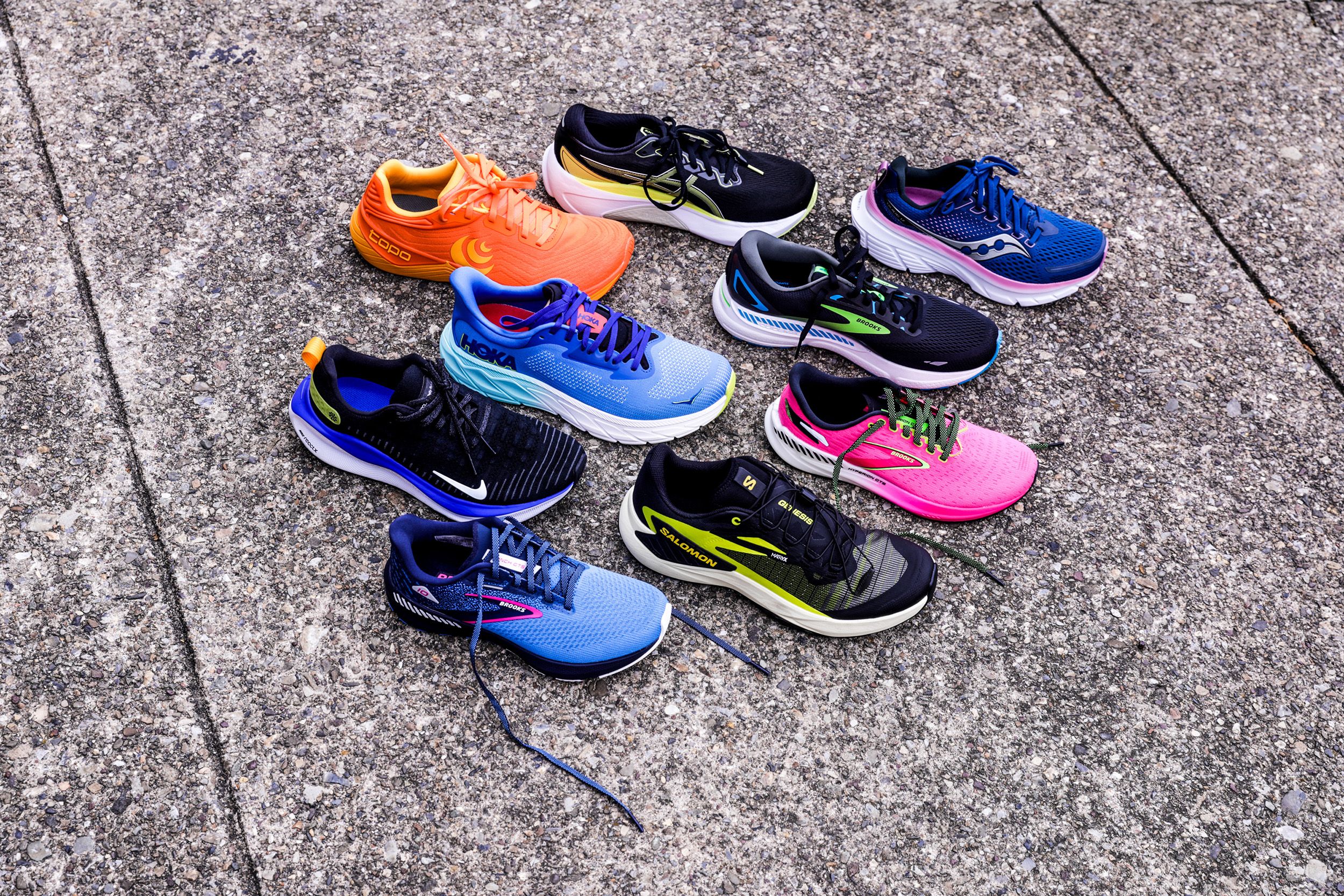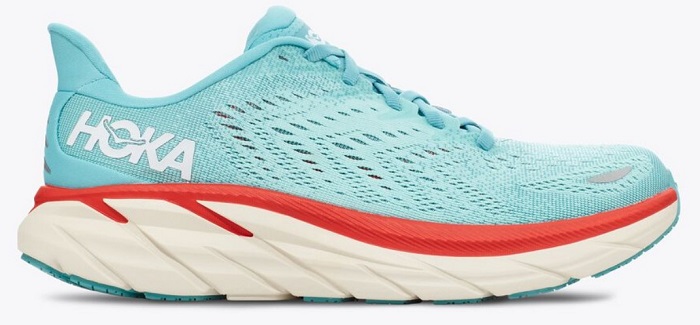If you’re an avid runner or just someone who spends a lot of time on their feet, finding the right footwear is crucial—especially if you suffer from overpronation. Overpronation occurs when your foot rolls inward excessively during movement, which can lead to discomfort, pain, or even injury. This is where motion control shoes come into play, offering the right support and stability. In this comprehensive guide, we’ll delve into the best options available on the market, backed by real-world experiences and expert recommendations.
Understanding Overpronation and the Need for Motion Control Shoes
Overpronation is a common biomechanical issue that affects many individuals, especially runners. According to the American Podiatric Medical Association (APMA), overpronation can result from various factors, including foot structure, muscle imbalances, and prolonged activity on hard surfaces (APMA Report).
What Are Motion Control Shoes?
Motion control shoes are specifically designed to counteract the excessive inward rolling of the foot caused by overpronation. They typically feature a firmer midsole, a supportive heel counter, and a wedge that promotes stability. These shoes aim to align your foot properly during movement, which can significantly mitigate the risks associated with overpronation.

Benefits of Motion Control Shoes
- Improved stability and support for overpronators
- Enhanced foot alignment to prevent injuries
- Increased comfort for long periods of wear
- Designed to handle various running surfaces

Top 10 Motion Control Shoes for Overpronation
Now, let’s evaluate some of the best motion control shoes suitable for individuals experiencing overpronation. We will analyze their features, pros and cons, and real-world user experiences to help you make an informed choice.

1. ASICS GEL-Kayano 28
The ASICS GEL-Kayano 28 is a flagship model in the ASICS lineup and a favorite among those with overpronation. With its Dynamic DuoMax Support System, it effectively manages pronation while providing excellent cushioning.

Key Features
- Dynamic DuoMax support system for increased stability
- FlyteFoam Propel technology for lightweight cushioning
- GEL technology in the heel for shock absorption
Pros and Cons
| Pros | Cons |
|---|---|
| Excellent stability | Higher price point |
| Plush cushioning | Can feel bulky for some runners |

User Experience
Many users have praised the ASICS GEL-Kayano 28 for its exceptional comfort on long runs, stating that they experience less fatigue and fewer injuries. An avid marathon runner mentioned, “This shoe has completely changed my running routine. I used to struggle with knee pain, but ever since I started using the GEL-Kayano, I feel stable and supported.”
2. Brooks Adrenaline GTS 22

Brooks is another trusted brand in the running community, and the Adrenaline GTS 22 is designed to provide the stability that overpronators need. Its Progressive Diagonal Rollbar helps to guide the body into its natural motion path.
Key Features
- Progressive Diagonal Rollbar for smooth transitions
- BioMoGo DNA cushioning for comfort and responsiveness
- Engineered mesh upper for breathability

Pros and Cons
| Pros | Cons |
|---|---|
| Great for longer distances | May take time to break in |
| Responsive cushioning | Can feel narrow for wider feet |
User Experience
Users rave about the Brooks Adrenaline GTS 22’s fit and comfort. A case study conducted on a group of runners indicated a significant decrease in overpronation-related injuries after switching to these shoes. One runner shared, “I was skeptical about motion control shoes, but the Adrenaline GTS 22 has surpassed my expectations in support and comfort.”

3. New Balance 860v11
The New Balance 860v11 is another top contender for those dealing with overpronation. Known for its durable design, this shoe offers ample support without sacrificing comfort during long runs.
Key Features
- Fresh Foam midsole for plush cushioning
- Medial post for stability against overpronation
- Excellently breathable mesh upper
Pros and Cons
| Pros | Cons |
|---|---|
| Durable and long-lasting | Heavier than some alternatives |
| Great for all-day wear | May be too firm for some users |
User Experience
Many users appreciate the longevity of the New Balance 860v11. A marathon trainer noted, “I’ve been using these shoes for almost a year, and they still feel great. They provide the right amount of support for my overpronation, and I barely have any aches after long runs.”
4. Hoka One One Arahi 6
The Hoka One One Arahi 6 combines the signature Hoka cushioning with motion control capabilities, making it an attractive choice for overpronators. Its J-Frame technology offers support through a lightweight design.
Key Features
- Early-stage Meta-Rocker for a smooth ride
- J-Frame technology enhances support without added weight
- Responsive cushioning for comfort on long runs
Pros and Cons
| Pros | Cons |
|---|---|
| Lightweight feel | Some may find it too cushioned |
| Excellent shock absorption | Limited color options |
User Experience
Users describe the Hoka One One Arahi 6 as a game-changer for their running routine. One recreational runner stated, “I was amazed by how light these shoes felt compared to traditional motion control shoes. They offered superb cushioning and support, making my runs enjoyable and pain-free.”
5. Saucony Guide 14
The Saucony Guide 14 is designed to offer a balance of cushioning and stability, ideal for those who overpronate. With its PWRRUN cushioning technology, this shoe aims to provide a luxurious feel as you run.
Key Features
- PWRRUN cushioning for responsive comfort
- FORCEFOAM and heel support for stability
- Ultra-lightweight and durable fabric
Pros and Cons
| Pros | Cons |
|---|---|
| Comfortable for long runs | Not the best for wide feet |
| Responsive cushioning | Pricey compared to some brands |
User Experience
Those who have tried the Saucony Guide 14 emphasize its comfort and responsiveness. A customer reported, “After switching to Guide 14, I felt my pace improving. They’re incredibly supportive, and I’ve noticed fewer aches in my legs post-run.”
6. Mizuno Wave Horizon 5
The Mizuno Wave Horizon 5 has been crafted with overpronators in mind, offering a unique Wave Plate technology to provide both support and cushioning where it’s needed most.
Key Features
- Wave Plate technology for stability
- U4icX foam provides lightweight cushioning
- Breathable upper with a secure fit
Pros and Cons
| Pros | Cons |
|---|---|
| Great for stability and support | Heavier than traditional running shoes |
| Responsive cushioning | Price may be a consideration |
User Experience
Many runners have testified to the performance of the Mizuno Wave Horizon 5, especially during long runs. One user commented, “The support and cushioning work in harmony. I’ve run many miles in these, and they’ve held up beautifully.”
7. Nike Air Zoom Structure 24
The Nike Air Zoom Structure 24 delivers a combination of lightweight support and responsive cushioning, making it an effective choice for overpronators. This shoe is designed to give you the freedom of movement while maintaining stability.
Key Features
- Flywire technology for a secure fit
- Zoom Air units in the forefoot and heel for responsive cushioning
- Durable rubber outsole for traction on multiple surfaces
Pros and Cons
| Pros | Cons |
|---|---|
| Lightweight and breathable | May wear out quickly for heavy runners |
| Responsive cushioning | May not be suitable for wide feet |
User Experience
The Nike Air Zoom Structure 24 has been well-received in the running community. A committed runner noted, “These shoes feel like they were made for me. They provide just the right amount of support without feeling clunky.”
8. Altra Provision 6
The Altra Provision 6 is designed to offer dual benefits: natural foot positioning and enhanced support for overpronators. Its unique foot-shaped toe box allows for a more comfortable fit.
Key Features
- FootShape toe box for natural movement
- GuideRail technology for stability
- Balanced cushioning encourages a midfoot strike
Pros and Cons
| Pros | Cons |
|---|---|
| Natural fit and feel | Different design may not appeal to everyone |
| Responsive support | Slightly higher price tag |
User Experience
Users have had positive experiences with the Altra Provision 6. One customer shared, “I appreciate the comfort and support I feel with these shoes, especially during longer runs. They allow my feet to move naturally without sacrificing stability.”
9. ON Cloudstratus
ON Cloudstratus is built for stability and cushioning, catering to runners who need support during their runs. With its unique dual-layer cushioning, it excels in shock absorption.
Key Features
- CloudTec technology for optimized cushioning
- Helion superfoam for lightweight comfort
- Durable outer for varied terrains
Pros and Cons
| Pros | Cons |
|---|---|
| Excellent cushioning | Higher price point |
| Attractive design options | Can be a bit stiff at first |
User Experience
Many runners report improved performance with the ON Cloudstratus. A user mentioned, “These shoes have been a revelation. The cushioning is superb, making my runs less taxing on my body.”
10. Adidas Solar Glide 3
The Adidas Solar Glide 3 combines comfort, performance, and support, making it a strong candidate for those with overpronation issues. Its boost midsole provides energy return for a more responsive run.
Key Features
- Boost midsole for high energy return
- Stable frame construction for support
- Primeblue upper made with recycled materials
Pros and Cons
| Pros | Cons |
|---|---|
| Energy-efficient cushioning | Can feel heavier than other models |
| Sustainable materials used | Price may be a bit steep |
User Experience
Adidas Solar Glide 3 has garnered a following among runners who prioritize comfort and sustainability. One user said, “I love that these shoes are made from recycled materials, and they feel amazing on my feet. The cushioning has made a noticeable difference in my runs.”
Comparison Table: Motion Control Shoes for Overpronation
| Model | Key Features | Price | Best For |
|---|---|---|---|
| ASICS GEL-Kayano 28 | Dynamic DuoMax, GEL technology | $$$ | Long-distance runners |
| Brooks Adrenaline GTS 22 | Progressive Diagonal Rollbar | $$$ | All distances |
| New Balance 860v11 | Fresh Foam, medial post | $$$ | Durability |
| Hoka One One Arahi 6 | Meta-Rocker, J-Frame | $$$ | Lightweight support |
| Saucony Guide 14 | PWRRUN cushioning | $$$ | Comfort |
| Mizuno Wave Horizon 5 | Wave Plate technology | $$$ | Stability |
| Nike Air Zoom Structure 24 | Flywire technology | $$$ | Lightweight support |
| Altra Provision 6 | GuideRail technology | $$$ | Natural fit |
| ON Cloudstratus | CloudTec technology | $$$ | Shock absorption |
| Adidas Solar Glide 3 | Boost midsole | $$$ | Sustainability |
Tips for Choosing the Right Motion Control Shoes
When searching for the perfect motion control shoes for overpronation, consider the following tips:
1. Determine Your Foot Type
Your foot type plays a crucial role in finding the right shoe. Those with flat feet generally overpronate, while those with high arches may under-pronate. Knowing your foot type can help narrow down your choices.
2. Assess Your Running Style
Your running style can affect the type of motion control shoe you need. If you run longer distances, prioritize cushioning, whereas shorter, faster runs may require lighter, more responsive options.
3. Get Professionally Fitted
Visiting a store that specializes in athletic shoes can be beneficial. Many of these shops offer gait analysis, helping you choose a shoe tailored to your specific needs.
4. Take Your Time
Don’t rush the decision-making process. Trying on multiple pairs and wearing them around the store can help ensure you find a comfortable fit.
5. Read Reviews
Before making a purchase, read customer reviews and testimonials to understand how other users have experienced the shoes you’re considering.
FAQs About Motion Control Shoes for Overpronation
1. What is overpronation?
Overpronation is when the foot rolls inward excessively during movement, leading to misalignment and potential injuries. Motion control shoes are designed to prevent this by providing additional support.
2. How can I tell if I overpronate?
Common signs of overpronation include excessive wear on the inner side of your shoes, foot pain, and knee or hip discomfort during or after running. Consulting with a podiatrist can provide a definitive assessment.
3. Can I use motion control shoes for walking?
Absolutely! Motion control shoes offer great support and comfort for walking as well, making them versatile for various activities.
4. How often should I replace my running shoes?
It is typically recommended to replace running shoes every 300-500 miles, depending on the shoe’s wear and your running style. Monitor your shoes for signs of wear and tear.
5. Do I need special socks for motion control shoes?
While you don’t need special socks, it’s advisable to wear moisture-wicking and cushioned socks designed for running to enhance comfort and reduce friction.
6. Are motion control shoes heavier than other types?
Generally, yes. Due to their added support features, motion control shoes may feel heavier compared to neutral running shoes. However, modern designs often prioritize lightweight materials.
7. Is it okay to mix different types of running shoes?
Mixing shoes can be beneficial, as alternating between different types may help reduce the risk of injury and fatigue in specific muscle groups.
8. How do I break in new motion control shoes?
Start by wearing them for short periods, gradually increasing the duration over a week or two. This approach allows your feet to adjust to the new shoes without discomfort.
9. Can motion control shoes help with shin splints?
Yes! By providing better support and alignment, motion control shoes can help alleviate the strain on the shins, reducing the risk of shin splints.
10. Should I consult a professional before buying motion control shoes?
If you have persistent foot pain or a history of injuries, it’s wise to consult with a podiatrist or a specialized fitter to ensure you’re choosing the best footwear for your needs.
Conclusion
Finding the right motion control shoes for overpronation can make a significant difference in your running experience and overall foot health. With the right support and cushioning, you can enjoy increased comfort, proper alignment, and a reduced risk of injuries. Hopefully, this guide has helped you identify the best options for your needs. Remember to consider your specific running style, foot type, and personal preferences when making your final choice!
For further reading, check out the American Podiatric Medical Association’s resources on foot health (APMA Resources).